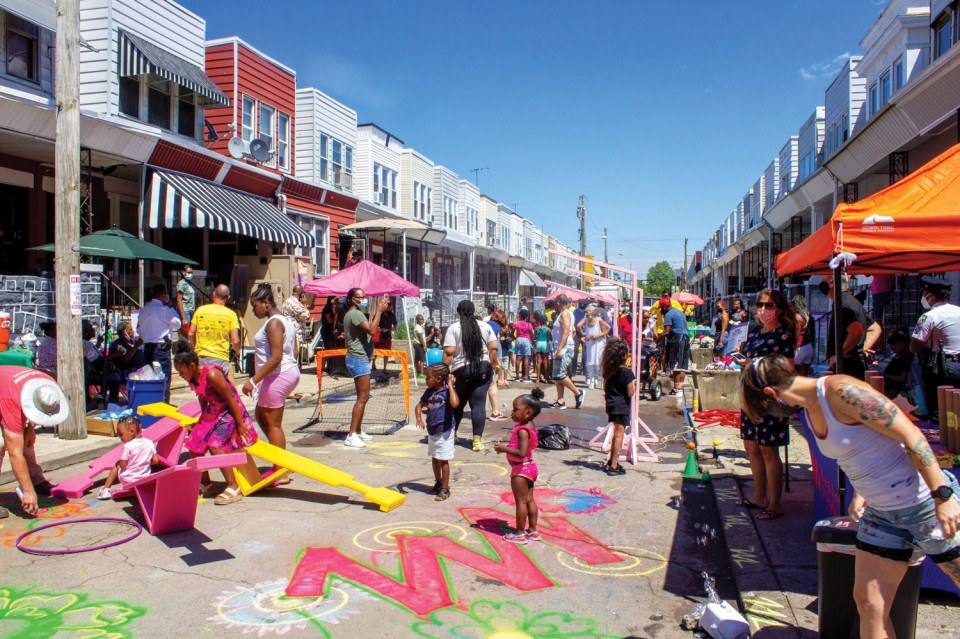Why Philly Needs to Close More Streets to Car Traffic
Great (and fun) things can be achieved when we don’t allow cars to dominate the transportation conversation.

Playstreets joy on one West Philly block shows the potential for open, flexible streets. / Photograph by Joe O’Connor
As anyone who regularly traverses it knows, 9th Street as it runs through the Italian Market is chaos. The 47M bus squeezes its way north, mirrors grazing towers of tomato boxes. Drivers with Jersey plates inch along, desperate to find a spot that doesn’t require them to remember how to parallel-park.
But every year, for one magical May weekend, that all disappears, replaced by flat-tops sizzling with sausage, kids zipping through the crowd on scooters, parents relaxing with their second (or third) Peronis. The Italian Market Festival closes the stretch from Wharton to South — nearly three-quarters of a mile of street and endless miles of possibility.
Philadelphia dabbles in the concept of open and play streets, places where — either permanently or temporarily — the street is given over to the pedestrians, strollers and scooters usually relegated to sidewalks. There were Sansom Street and the MLK Drive during the pandemic, for instance; there’s also the city’s fantastic summer Playstreets program, which shuts down select streets for a day of food and neighborhood fun. These are micro-examples of what can be achieved when we don’t allow cars to dominate the transportation conversation. We can — and should — do more of this.
Consider Barcelona, Spain, for example, whose popular “superblocks” make use of the gridded layout to turn internal streets into pedestrian or shared streets, directing the bulk of car traffic to the grid’s exterior. Or we might peer south, at Fortaleza, Brazil, and its decade-old Cidade da Gente (City of People) project. That program started small — reducing neighborhood traffic to one lane for deliveries and turning the other lanes into brightly painted play space — then expanded across the city. The projects are often temporary at first and reflect the needs of the community.
“Our streets shouldn’t be the same thing for everybody all the time, because our cities are not static,” says Skye Duncan, executive director at the Global Designing Cities Initiative, whose mission is to transform streets around the world. “There are different flows, different needs. You look at drop-offs, pickups, weekends, weather, seasons. There’s a huge amount of untapped potential in thinking about time.” Much of the pushback on open streets comes from businesses worried about deliveries, she says, but if you add flexibility for those needs up front, such concerns abate.
Also, reimagining our streets doesn’t always mean big things like bollards or closing a street completely to cars. Sometimes it’s just adding a bench in a kooky shape or filling street planters with native flora. “How do we find little moments in the journey for kids to build meaningful connections and to learn something, or to stop and look at a texture or smell a flower?” Duncan asks.
We have a leg up on many cities. We have a stitched-together grid with an abundance of tiny streets that require an F1 driver’s precision to navigate. Now all we need is some will. And maybe some sausages.
>> Click here for 17 Big Ideas to Make Philly a Kid-Friendly City
Published in the July 2023 issue of Philadelphia magazine.


